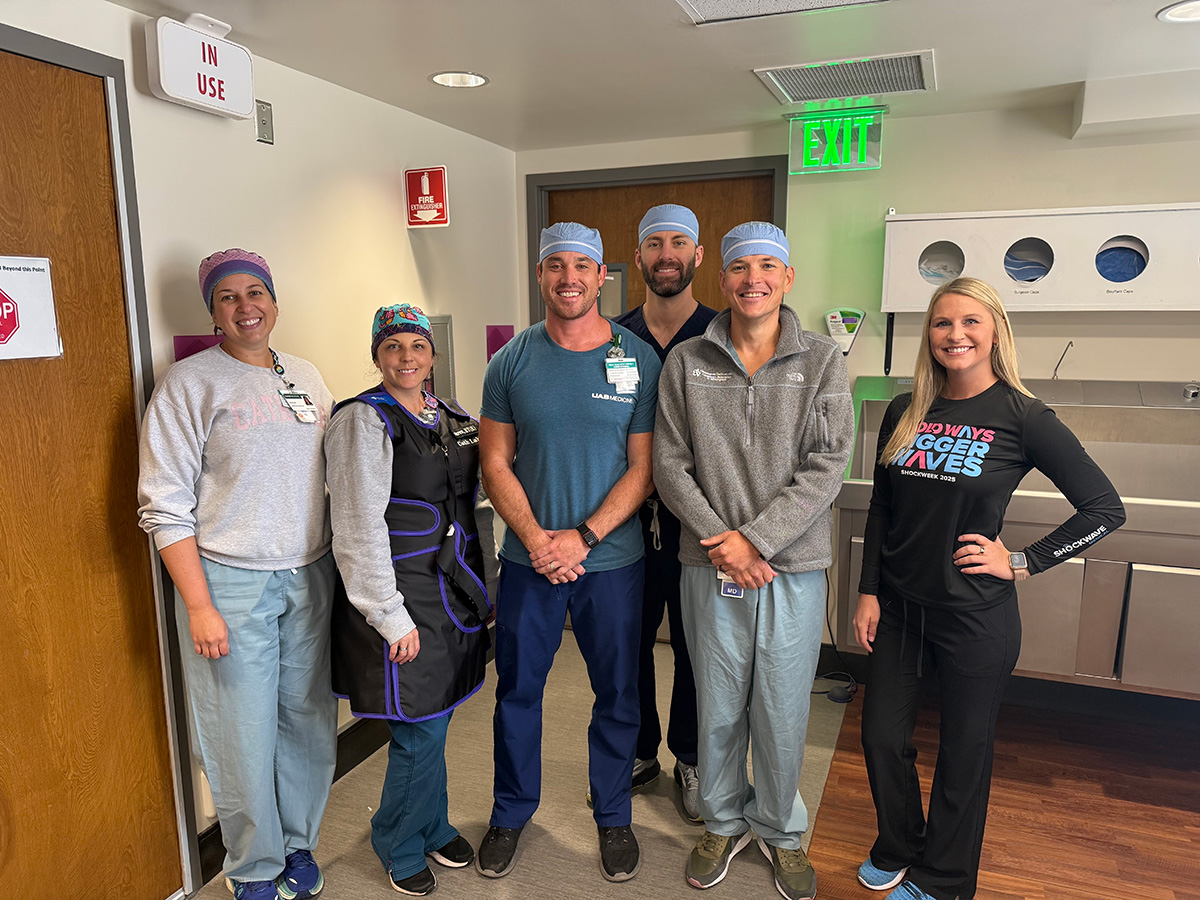 UAB St. Vincent’s, part of the University of Alabama at Birmingham Health System, is the first hospital in the Greater Birmingham area where cardiologists have performed an innovative new treatment for patients with severely calcified peripheral artery disease, or PAD.
UAB St. Vincent’s, part of the University of Alabama at Birmingham Health System, is the first hospital in the Greater Birmingham area where cardiologists have performed an innovative new treatment for patients with severely calcified peripheral artery disease, or PAD.
Interventional cardiologist Christopher DeGroat, M.D., performed the first case using a new technology that works in a way similar to the treatment for kidney stones but is designed for blood vessels in the legs. It uses gentle sound waves to break up hardened plaque and calcium that block blood flow above and below the knee. The new soundwave technology is the first non-balloon-based platform and is designed to fracture problematic calcium and cross extremely narrowed vessels where a wire will cross but devices might not. This breakthrough gives doctors a new way to treat people with advanced peripheral artery disease with the goal of making care safer and more effective for patients.
“It’s always exciting when we can bring the latest evidence-based treatment to our patients to help improve their quality of life,” DeGroat said. “With this first-of-its-kind intravascular lithotripsy technology, we will better be able to treat difficult-to-cross calcified blockages, reduce the need for amputations and improve outcomes for patients living with PAD.”
PAD is a condition that affects more than 8 million people age 40 or older in the United States alone. It is a condition characterized by the narrowing or blockage of the blood vessels that carry blood from the heart to the limbs, particularly the legs. This is caused by the buildup of plaque in the arteries, which over time can evolve into calcium deposits and harden. The most advanced stage of PAD is known as chronic limb-threatening ischemia, or CLTI, which affects nearly 2 million patients and is associated with high rates of major amputations and mortality.
Severely calcified arteries become difficult to open with traditional treatment tools, including balloons, which attempt to break through calcium when inflated to high pressure, and atherectomy, which drills through the calcium to open the artery. The procedure creates shock waves that create a spherical energy field beyond the tip of the catheter, delivering lithotripsy closer than other IVL balloon-based platforms so that the artery can be safety expanded, and blood flow can be restored with lower complications.